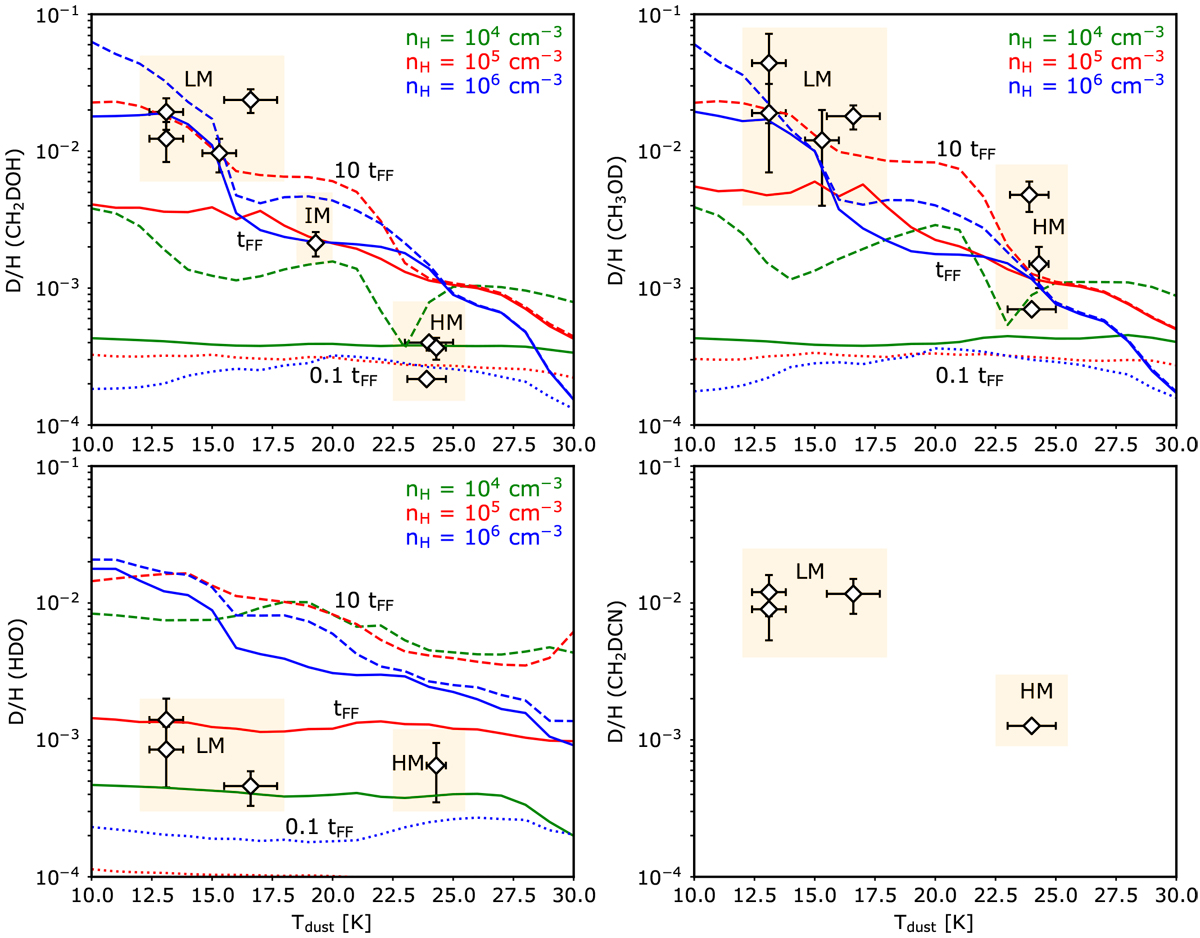Fig. C.1

Statistical (i.e. taking into account the statistical ratios for the functional groups with multiple H-atoms) CH2 DOH (top left), CH3OD (top right), HDO (bottom left), and CH2DCN (bottom right) deuterium fractionations observed towards the hot core of a sample of low-mass, intermediate-mass, and high-mass protostars with sub-millimeter interferometers as a function of the dust temperature of the surrounding cloud measured with the Herschel or Planck telescopes (see values in Table 3). Green, red, and blue curves show the deuterations predicted by the GRAINOBLE astrochemical model in ices as a function of the dust temperature assumed in the dark cloud simulation at nH = 104, nH = 105 and 106 cm−3, respectively, for at 0.1 × tFF (dotted lines), tFF (solid), and 10 × tFF (dashed), where tFF is the free-fall time for the corresponding density. No predictions are given for the CH3 CN deuteration because this molecule is thought to be mostly produced in the vicinity of protostars either on ices or in the gas phase through warmer chemistry. LM, IM, and HM stand for low-mass, intermediate-mass, and high-mass protostars, respectively. See text for more details.
Current usage metrics show cumulative count of Article Views (full-text article views including HTML views, PDF and ePub downloads, according to the available data) and Abstracts Views on Vision4Press platform.
Data correspond to usage on the plateform after 2015. The current usage metrics is available 48-96 hours after online publication and is updated daily on week days.
Initial download of the metrics may take a while.


